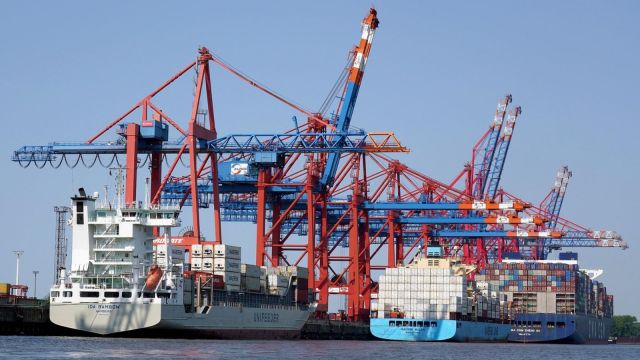India and the Russia-led Eurasian Economic Union (EAEU) on Wednesday kick-started negotiations for a trade deal as talks with the US broke down after US President Donald Trump called India a “dead economy” and raised tariffs on Indian products to 50 per cent, highest globally.
The restart of trade negotiations with EAEU, which has a combined GDP of $6.5 trillion, comes after New Delhi has ostensibly begun a pivot towards China, Russia and Brazil in the face of US economic coercion. After the fallout with the US over trade deal negotiations, Prime Minister Narendra Modi has had a phone call with Brazilian President Lula da Silva, Russian President Vladimir Putin and is expected to meet Chinese President Xi Jinping later this month.

The trade deal talks with EAEU were stalled in early 2022 after the Ukraine war. The grouping comprises Armenia, Belarus, Kazakhstan, Kyrgyz Republic, apart from Russia.
“India and the EAEU comprising Armenia, Belarus, Kazakhstan, Kyrgyz Republic and the Russian Federation signed the Terms of Reference (ToR) to launch negotiations on a Free Trade Agreement (FTA) today in Moscow. The ToR was signed by Additional Secretary, Department of Commerce Ajay Bhadoo, and Deputy Director, Trade Policy Department, EEC, Mikhail Cherekaev,” the commerce and industry ministry said.
The ministry said that the ToR provides the framework for negotiations and is expected to unlock untapped trade potential, increase investments and establish a stronger, durable India–EAEU economic partnership. “Both sides reaffirmed their commitment to the early conclusion of the agreement and to building a long-term institutional framework for trade cooperation,” the ministry said in a statement.
The trade turnover between India and the EAEU stood at $69 billion in 2024, a 7 per cent increase over 2023. “With a combined GDP of $6.5 trillion, the proposed FTA is expected to expand market access for Indian exporters, support diversification into new sectors and geographies, enhance competitiveness against non-market economies, and deliver significant benefits to Micro, Small and Medium Enterprises (MSMEs),” the ministry said.
Challenges in Russia-India trade
When Russia invaded Ukraine in February 2022, Moscow’s share in New Delhi’s oil imports was less than 2 per cent. With much of the West shunning Russian crude following the invasion, Russia began offering discounts on its oil to willing buyers. Russia now accounts for 35-40 per cent of India’s total oil imports by volume.
Story continues below this ad
However, India’s exports to Russia have only doubled from $2.39 billion in FY19 to $4.88 billion in FY25, widening the trade deficit to over $60 billion. To balance the trade with Russia, India has also restarted taking measures to ease rupee-ruble trade after talks of setting up rupee-ruble trade with Russia collapsed last year. Government officials said that fresh talks have begun. In contrast, Russia-China has set up a mechanism for trade in domestic currency, reducing the reliance on the US dollar.
Stress on India over US tariffs
With India facing steep US tariffs, exporters are looking for newer markets. Exporters said that Russia could become a key market for Indian textile and pharmaceutical products. India primarily exports engineering and electronic goods to Russia. Drugs and pharmaceuticals are the third highest export item.
Stressing on the need for diversification, a Kotak research report on Wednesday said that the US’ reciprocal tariff of 25 per cent on Indian exports, even without the additional penal 25 per cent tariff later this month, could exert pressure on goods exports.
“Depending on the extent of tariff pass-through and the price elasticity of US imports, annual export losses could be in the range of $0-35 bn, with risks skewed toward the higher end. In a scenario where tariffs rise to 50 per cent, the entire non-exempted export basket (around US$55 bn) could be at risk annually,” the report said.
Story continues below this ad
A Crisil report said the move to impose an additional 25 per cent tariff with effect from August 27, 2025 as a penalty for importing crude oil from Russia will make Indian exports to the US unviable for most including ready-made garments (RMG), chemicals, agrochemicals, capital goods and solar panel manufacturing, which have sizable trade exposure to the US.

































